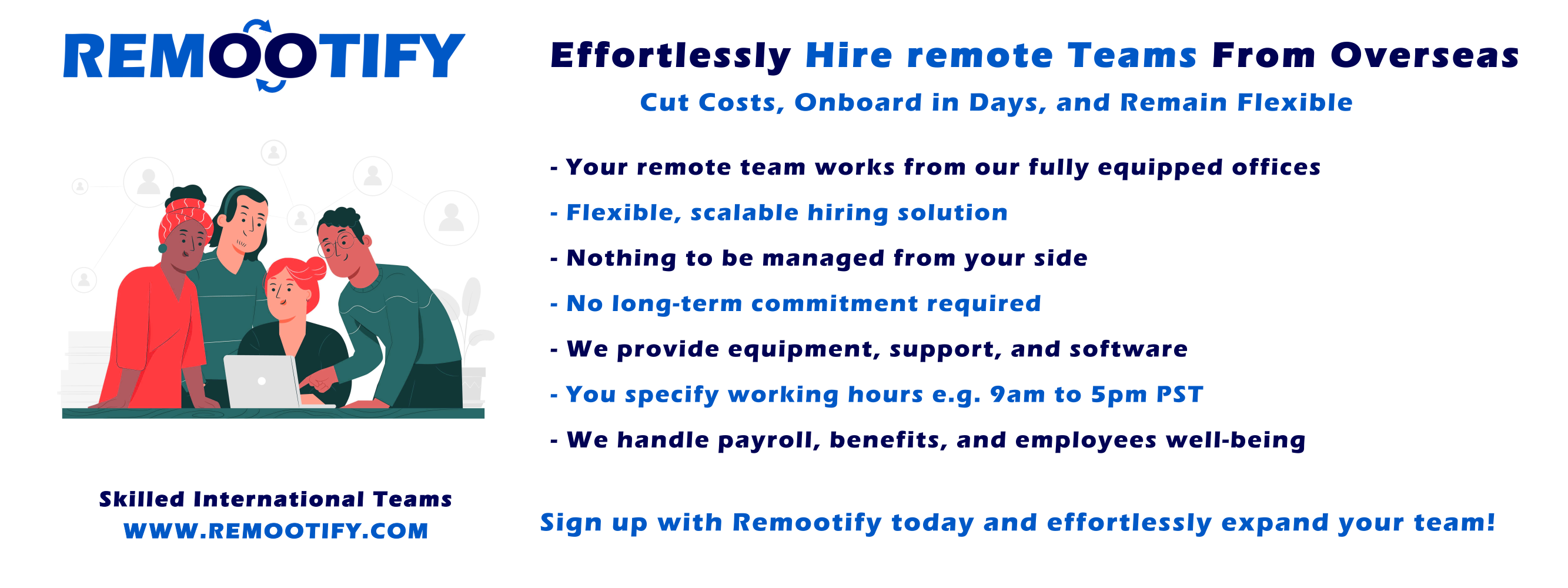Start hiring YOUR REMOTE TEAM, Today!
Enter your information below to start a discussion with one of our team members!

Payroll withholding is a crucial aspect of every employee’s financial journey, and it’s not just about taxes. It’s a mechanism that can significantly impact the financial stability, convenience, and future planning of company employees.
In this article, we’ll explore the various ways payroll withholding benefits employees and why it matters.
Key Takeaways
- Payroll withholding is a critical aspect of employee compensation that benefits workers in various ways.
- It provides financial stability by ensuring predictable income and simplifying budgeting.
- Tax compliance is made easier through payroll withholding, reducing the likelihood of facing tax-related issues.
- Payroll withholding supports retirement savings, with contributions and potential employer matching for retirement plans.
- It also aids in securing essential insurance coverage, such as health and life insurance.
- Employees can adjust their withholding amounts using a Form W-4 to align with their financial goals.
- Compliance with legal requirements and regulations is crucial for both employers and employees.
Understanding Payroll Withholding
A. Definition and Concept
- Payroll Withholding Overview
- Payroll withholding refers to the process of deducting a portion of an employee’s earnings from their paycheck.
- This withheld amount is typically for taxes and other authorized deductions.
- Components of Payroll Withholding
- It includes deductions for federal and state income taxes, Social Security, Medicare, and often other items like retirement contributions or health insurance premiums.
- The withheld funds are set aside for remittance to the respective government agencies or designated accounts.
- Purpose of Payroll Withholding
- It ensures that employees meet their tax obligations gradually throughout the year, rather than in a lump sum during tax season.
- Helps in budgeting for government expenditures and benefits, such as Social Security and Medicare.
B. Role of Payroll Withholding in Employee Compensation
- Income Stabilization
- Payroll withholding helps employees manage their finances by spreading tax payments evenly over each paycheck.
- This prevents the need for large, lump-sum tax payments.
- Employer Responsibility
- Employers play a critical role in administering payroll withholding by accurately calculating and deducting the correct amounts.
- They are responsible for timely depositing withheld funds to the appropriate tax authorities.
- Employee Benefits
- Payroll withholding supports various employee benefits programs like Social Security, Medicare, and retirement plans.
- It ensures employees are eligible for these benefits when they need them.
- Tax Compliance
- Withholding helps employees remain compliant with tax laws, reducing the risk of underpayment and penalties.
- Employers must provide employees with pay stubs detailing these deductions for transparency.
C. Legal Requirements and Regulations
- Federal Tax Withholding
- Employers must follow IRS guidelines for federal income tax withholding based on the employee’s W-4 form.
- The IRS regularly updates withholding tables to reflect tax law changes.
- State Tax Withholding
- State tax withholding varies by jurisdiction, and employers must adhere to state-specific regulations.
- Some states have their own forms for employees to specify withholding preferences.
- Social Security and Medicare
- Employers and employees both contribute to Social Security and Medicare through payroll withholding.
- These deductions follow specific percentage rates set by federal law.
- Reporting and Compliance
- Employers must report payroll withholdings accurately to tax authorities.
- Failure to comply with withholding regulations can result in penalties for both employers and employees.
- Employee Rights
- Employees have the right to understand how payroll withholding affects their compensation.
- They can adjust their withholding allowances using IRS Form W-4 to better align with their tax situation.
Check our article here before getting your payroll consultant.
What Employers Need to Know About Withholding?
Benefits of Payroll Withholding for Company Employees
A. Financial stability and budgeting
- Predictable income
- Payroll withholding ensures a consistent and predictable income for employees, making it easier to plan expenses and financial goals.
- Simplified budgeting
- Employees can create and maintain a budget more effectively as they know the exact amount of their take-home pay after taxes and deductions.
B. Tax compliance and convenience
- Tax compliance made easy
- Withholding taxes directly from paychecks ensures that employees meet their tax obligations without the need for extensive tax planning or manual payments.
- Reduced tax liability
- By spreading tax payments throughout the year, employees are less likely to face a large tax bill at the end of the year, reducing the risk of penalties and interest.
C. Retirement savings
- Retirement plan contributions
- Payroll withholding can automate contributions to retirement accounts such as 401(k)s, helping employees save for the future consistently.
- Matching contributions by the company
- Many employers offer matching contributions to retirement plans, amplifying the benefits of payroll withholding for employees’ long-term financial security.
D. Health and insurance benefits
- Health insurance premiums
- Payroll withholding allows for easy deduction of health insurance premiums, ensuring that employees maintain coverage without the hassle of separate payments.
- Other insurance coverage
- Employees can also have other insurance premiums, such as life or disability insurance, deducted from their paychecks, providing peace of mind and coverage for unforeseen circumstances.
How Payroll Withholding Works?
A. Step-by-step breakdown of the payroll withholding process
- Employee W-4 form submission
- Employees are required to complete a Form W-4 when they are hired or when their personal or financial situation changes (e.g., marriage, having a child).

- The Form W-4 includes information about the employee’s filing status, number of allowances, and additional withholdings.
- The employee’s choices on the W-4 impact how much income tax is withheld from their paychecks.
- Calculating withholding amounts
- Employers use the information provided on the W-4 to determine the appropriate amount of federal and state income tax to withhold from each paycheck.
- This calculation takes into account the employee’s income, marital status, number of allowances, and any additional withholding requested.
- Employers can use tax withholding tables provided by the IRS or tax software to make these calculations accurately.
- Payroll deductions
- Once the withholding amounts are calculated, the employer deducts these amounts from the employee’s gross pay.
- Other deductions, such as Social Security, Medicare, and retirement contributions, may also be taken from the employee’s pay.
- The remaining amount after deductions is the employee’s net pay, which is what they receive as their paycheck.
- Depositing withheld amounts to government agencies
- Employers are responsible for collecting and holding the withheld income and payroll taxes until they are due to be remitted to the appropriate government agencies.
- Typically, employers must deposit federal income tax withholdings on a regular basis, such as semi-weekly or monthly, depending on the amount withheld.
- State income tax and other deductions may have their own deposit schedules.
- Employers must file reports, such as Form 941 for federal taxes, to report the amounts withheld and paid to the IRS and other tax authorities.
- Late or incorrect deposits can result in penalties and interest charges.
How Does Payroll Withholding Help a Company’s Employees?
Payroll withholding is a crucial process that benefits both a company and its employees by ensuring smooth tax compliance and financial stability. Here’s how it helps employees:
- Simplified Tax Payments: Payroll withholding automates the deduction of federal, state, and local income taxes from employees’ paychecks. This simplifies the tax payment process, as employees don’t need to calculate and pay their taxes manually.
- Consistent Tax Liability: Withholding helps employees meet their tax obligations consistently throughout the year. This prevents the need to pay a large lump sum during tax season, reducing financial stress.
- Accurate Tax Withholding: Employers use tax tables and information provided by employees on their W-4 forms to calculate the correct amount of taxes to withhold. This accuracy helps employees avoid underpaying or overpaying taxes.
- Budgeting and Financial Planning: Predictable withholdings allow employees to budget more effectively since they know how much of their income is allocated for taxes. This stability aids in financial planning and meeting other financial goals.
- Avoiding Penalties: Withholding prevents employees from facing penalties and interest charges due to underpayment of taxes. Regular, accurate withholdings help employees stay compliant with tax regulations.
- Reduced Tax Burden: Some tax credits and deductions can be claimed through payroll withholding, reducing an employee’s overall tax burden. Examples include the Earned Income Tax Credit (EITC) and contributions to retirement accounts.
- Social Security and Medicare: Payroll withholding also covers Social Security and Medicare contributions. These deductions are vital for employees to qualify for these benefits in the future, providing financial security during retirement.
- Insurance and Benefits: Many companies offer employee benefits such as health insurance, retirement plans, and flexible spending accounts. Payroll withholding helps employees manage these contributions conveniently.
- Compliance with Child Support Orders: For employees with child support obligations, payroll withholding ensures that child support payments are deducted automatically and delivered to the appropriate authorities, preventing legal issues.
- Peace of Mind: Knowing that their taxes and other financial obligations are being handled systematically gives employees peace of mind, reducing stress and distractions at work.
—
Conclusion
Payroll withholding is the unsung hero of employee financial stability. It simplifies taxes, boosts retirement savings, and secures insurance coverage.
Embracing its benefits empowers employees and strengthens companies.
—
FAQs
How does payroll withholding benefit employees?
Payroll withholding benefits employees by providing them with financial stability, simplifying tax compliance, facilitating retirement savings, and ensuring access to essential insurance coverage.
What happens if my employer doesn’t comply with payroll withholding regulations?
Employers are legally obligated to comply with payroll withholding regulations. Non-compliance can result in penalties and legal consequences.
Can I adjust the amount of taxes withheld from my paycheck?
Yes, you can adjust your tax withholding by completing a Form W-4. This form allows you to specify the number of allowances, which affects the amount withheld for federal income tax.





